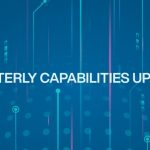In 2020, it seemed the whole corporate world was flipped on its head and employers found themselves scrambling to make their workforce remote as people were told to stay home. Almost overnight, employers had to find ways to make their technology work remotely and employees had to quickly adapt. The public sector was no exception. Many organizations, from legislatures to regulators, provided laptops for their employees to take home and video conference technology was heavily invested in.
In 2023, the public sector is weighing its options on how its employees will continue to work. Remote work in some form is here to stay so is there technology out there to ensure employees are feeling satisfied with their new work arrangements?
Weighing the options
Employers continue to weigh the pros and cons of the three options of what the workforce can look like – remote, hybrid and onsite.
|
Remote |
Working remote allows employees to work either from home or anywhere in the world with a Wi-Fi connection – depending on the organization’s policy. The pros of remote work are zero commute, a more comfortable environment, and increased productivity due to fewer distractions from colleagues. The cons include social isolation, difficulty unplugging, increased challenges when collaborating, and the risk of workers stealing time from the organization. Regardless of location, during working hours employees are on company time. This means they are being compensated for their work and are expected to refrain from engaging in personal activities. Employees are expected to attend all necessary meetings and meet deadlines, even with a flexible schedule policy. |
| Hybrid |
A hybrid work model, depending on the policy of the organization, often allows employees to choose which days they will spend in the office, and which days they will work remotely. This option helps eliminate some of the challenges when collaborating by allowing in-person meetings and giving workers the chance to socially interact. However, scheduling can be more difficult as teams try to navigate days onsite and offsite. There could also be a chance of division between workers who work remotely versus onsite staff if the hybrid model is only available to some employees depending on job function. Managers giving preference to certain workers based on how much they interact with them can also be a problem. Some managers working onsite may have unconscious bias towards workers who also work onsite as they are able to connect with them more easily due to in-person interactions. This could lead to rewards and recognition for onsite staff more than remote staff and cause a rift amongst teams. |
| Onsite |
Working onsite is the traditional work arrangement where employees commute to an in-person office. The pros include less distractions from family and pets, building comradery, and better communication between workers. The cons include a stricter schedule, long commutes, and possibly resentment when there is no remote option available. Many employees now look for remote or hybrid arrangements and onsite-only jobs may be harder to recruit and retain employees. |
Consider the stakeholders
Employers in the public sector have many stakeholders to consider when choosing their workforce strategy. It’s not just about the preference of the employer, but also the employee, elected officials and perception from citizens.
No matter what work arrangement the public sector organization chooses, the biggest challenge is to ensure employees are happy and engaged. Therefore, an investment in human capital management technology is important in the modern working world.
|
Employer From executives to middle management, everyone is going to have opinions and concerns on how to effectively manage their teams. Some leaders trust their team enough and know work can get done without physically being onsite. Other leaders, however, have trouble managing their teams and know that some staff will need more supervision than others. The employer will also have to examine the cost of keeping offices versus the cost of having employees work remotely. |

Employee Employees may have a different view of what their workday should look like. Some enjoy human interaction, and feel collaboration on projects is easier when done in-person. While other employees may gravitate to remote work because of no commute and a more flexible work arrangement. What many employers will find that when a remote or hybrid option isn’t available, employees will begin to disengage (quiet quitting), and possibly look for another job. |
|
Elected Officials The elected officials who run the government will need help when they are newly elected and getting used to the job. They most likely will require onsite staff to help train them before they are able to transition to a remote or hybrid model. Of course, even if they are working diligently from home, not being present in the office may appear as if they are not working or available to citizens. |
Citizens There will always be polarizing opinions from citizens on what they want to see from their government and public services. As mentioned before, when elected officials and public service workers do not appear to be available, citizens can get upset and question if work is being done. On the other hand, remote work saves costs and time, and can increase productivity as services become digitalized and adapt to the modern world. Most public services are moving to some form of remote work, but it is a slow transition that is still being debated. |
No matter what work arrangement the public sector organization chooses, the biggest challenge is to ensure employees are happy and engaged. Therefore, an investment in human capital management technology is important in the modern working world.
Human capital management technology
Human Resources technology has evolved from simply being just payroll and employee record management. Software is now available to manage the whole employee life cycle, from hiring, paying, and terminating, to cultivating and informing.
Human capital management (HCM) solutions focus on helping employers and employees manage and navigate their working relationships. Employers can keep track of employee development, send out important information, manage payroll and update benefits. Employees can use a single platform for professional development tracking, self-managing their benefits and finding organizational information.
HCM for remote, hybrid and onsite
The goal of HCM technology is to keep employees engaged and put the power of managing their own careers in their own hands. This is important when employees are trying to navigate their work arrangements.
When working remotely, HCM technology can be a great platform for employees to stay informed and connected to their colleagues by sharing news and announcements.
With a hybrid model, HCM technology can be used to ensure employees are not only engaged but accountable. Employees can keep track of schedules and ensure workflow is smooth. Building trust between remote employees, onsite employees, and managers will enhance teams and communication.
When making the choice to be strictly onsite, public service organizations still need to embrace modernized offices. Having the right technology to keep employees engaged can help reduce the risk of quiet quitting and high turnover.
Partnering with OnActuate
Investing in and implementing new technology can be a time-consuming process with lots of factors at play that could affect the deadline, total cost and actual launch day. Therefore, many public sector organizations take some time before finally deciding to go forward with implementing new technology because of the fear of wasting time and money – which usually negatively affects the citizens they serve.
However, with the right technology partner, these major projects can be less daunting. Finding the right partner, such as OnActuate, that looks into the goals and objectives of your organization to truly understand your needs is the first step to investing in your employees.
When you partner with OnActuate, you are getting a global partner with extensive public sector experience and a people-first mindset. OnActuate offers two HCM solutions with our two partners, Ceridian and Microsoft:
Whichever solution you choose to go along with the work arrangement you choose, OnActuate will be a partner that truly cares about the success of your organization and your employees.
Contact us today to learn more about your options.










